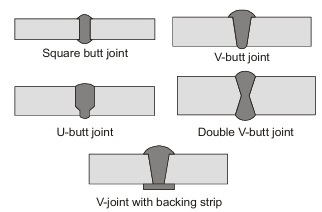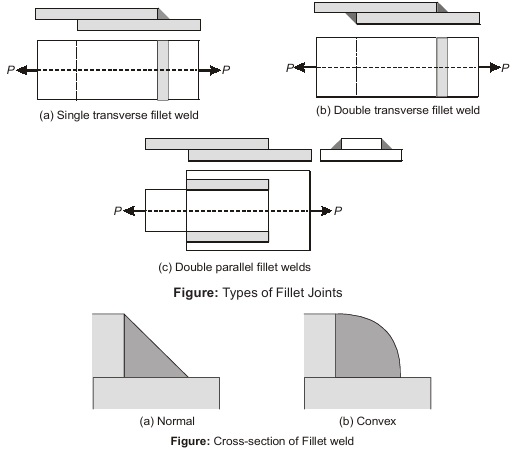Types of Welded Joint
Butt Joints
A butt joint is defined as a joint between two components lying approximately in same plane. It connects ends of two plate.
- Square Butt Joint: When the thickness of the plates is less than 5 mm. It is not necessary to bevel the edge.
- Single Welded V-joint: When the thickness of plate is more than 20 mm, edge of two plates are machined
to from a U-shape. It is welded only from one side. - Single Welded V-joint: When thickness of the plate is between 5 to 25 mm.
- Double Welded V-joint: When thickness of plate is more than 230 mm, a double welded V-joint is used.

Fillet Joints (Lap Joint)
It is a joint between two overlapping plate or components. It consists of an approximately triangular cross section joining two surfaces at right angle to each other.
Types of fillet joint:
(i) Transverse fillet joint: A fillet weld is called transverse, if the direction of the weld is perpendicular to the direction of the force acting on the joint. Double transverse fillet weld is preferred to avoid warp out of shape.
(ii) Parallel/longitudinal fillet weld: A fillet weld is called parallel fillet weld if direction of weld is parallel to the direction of force acting on joint.

These are two-types of cross-section for fillet weld-normal and convex. Convex weld require more filler material and there is more stress concentration. Thus normal weld is prepared over convex weld.

